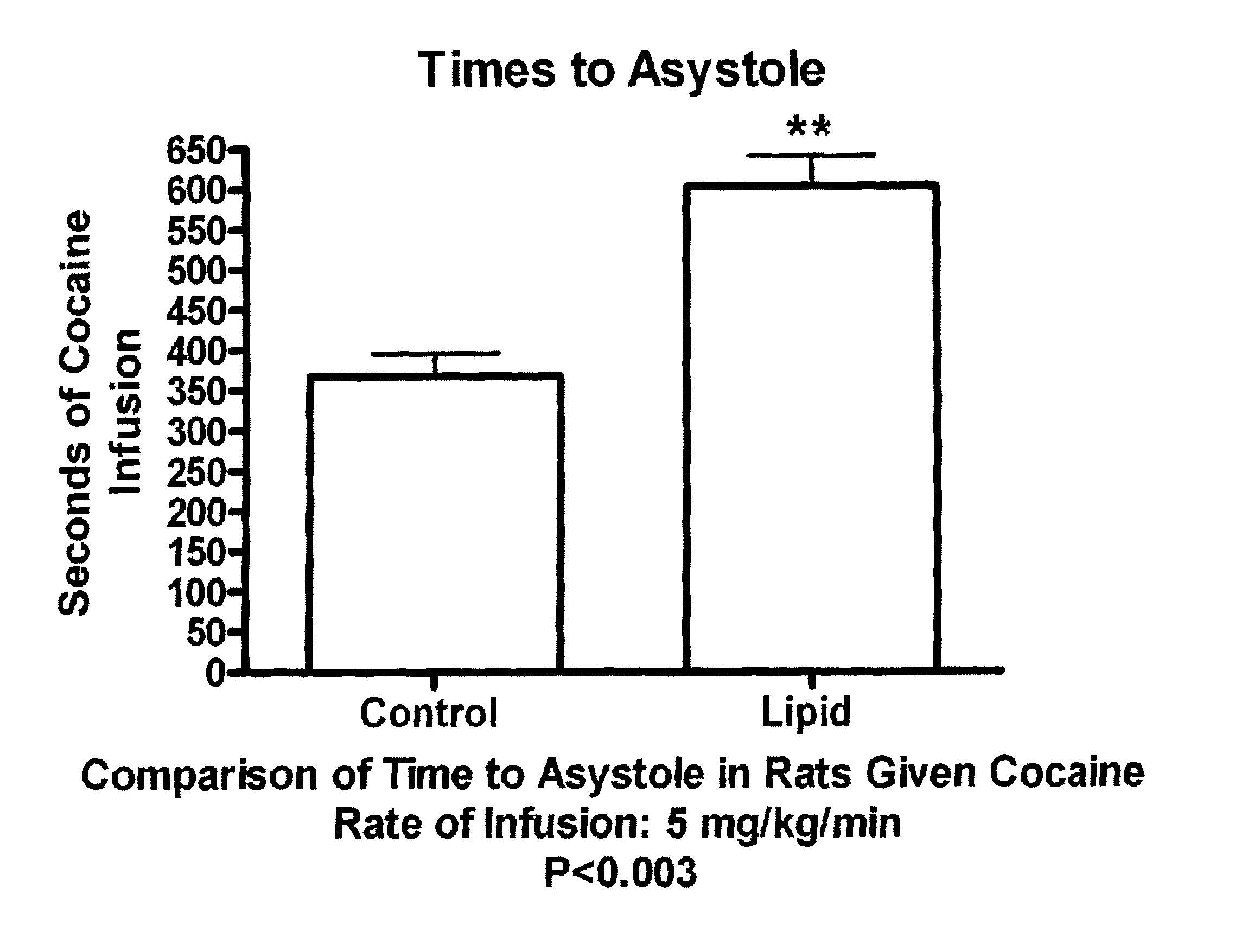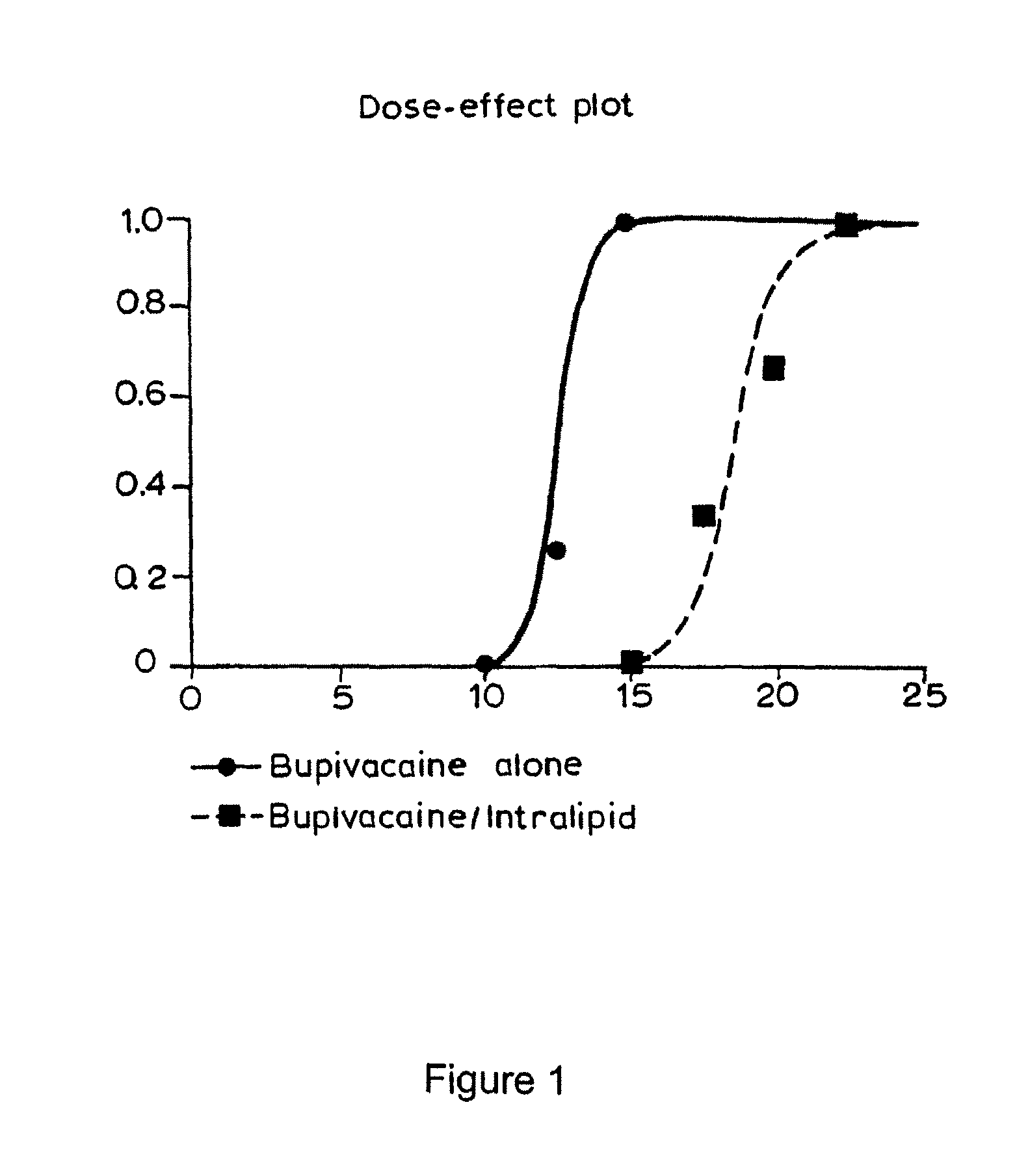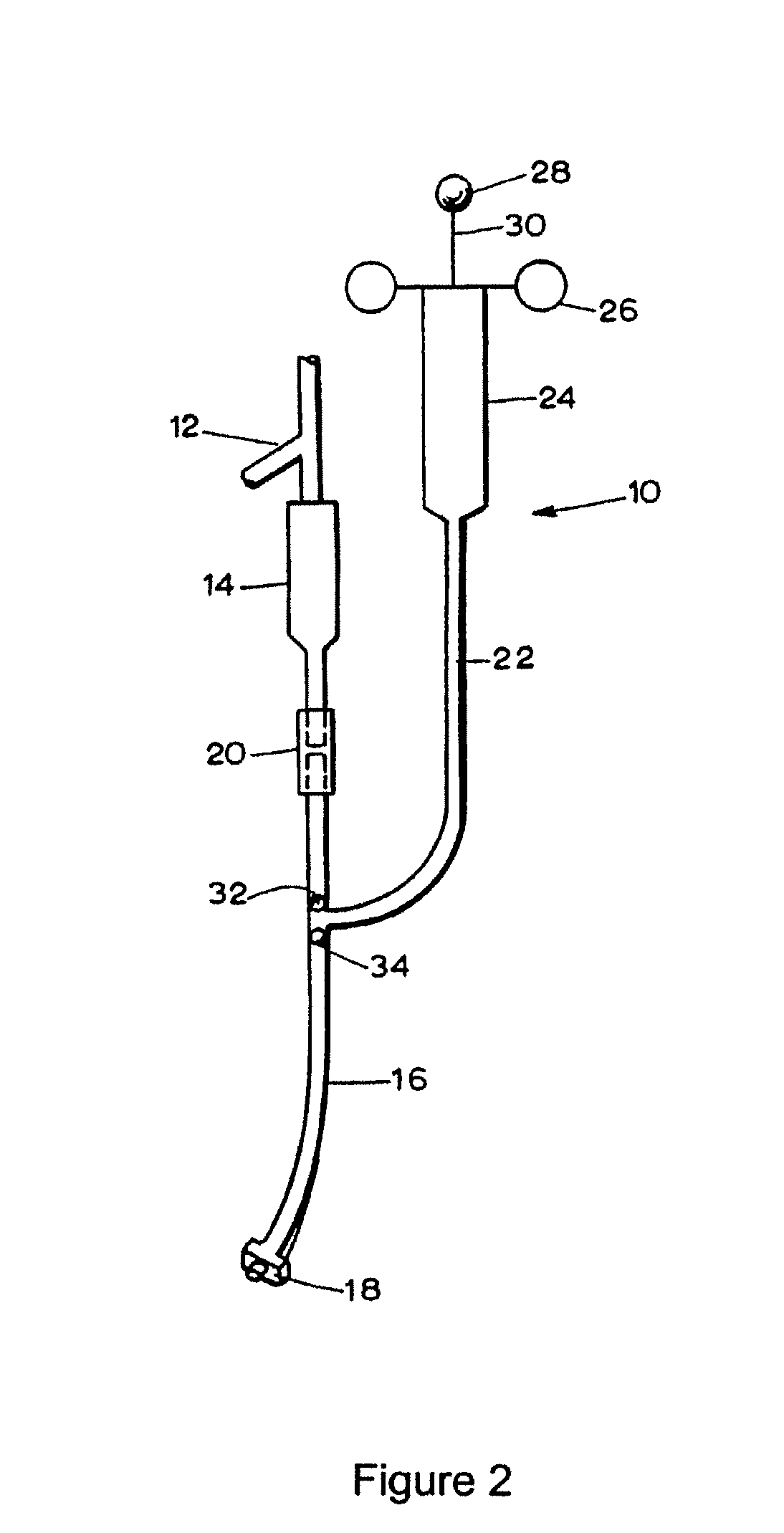Lipid emulsions in the treatment of systemic poisoning
a technology of lipid emulsion and systemic poisoning, which is applied in the direction of anti-noxious agents, drug compositions, biocide, etc., can solve the problems of neurological damage, ischemia is a restriction in blood supply or circulation, impaired automaticity and propagation of electrical impulses through, etc., and achieve the effect of reducing the bioavailability of foreign lipophili
- Summary
- Abstract
- Description
- Claims
- Application Information
AI Technical Summary
Benefits of technology
Problems solved by technology
Method used
Image
Examples
example 1
Pretreatment with a Lipid Emulsion Composition Shifts the Dose-Response to Bupivacaine Induced Asystole in Rats
[0048]Studies were undertaken to assess the ability of a lipid emulsion to shift the dose-response to drug-induced asystole (heart stoppage) in rats. Pretreatment with a lipid emulsion increased the dose of bupivacaine (a local anesthetic) required to induce asystole. Racemic bupivacaine hydrochloride was purchased from Sigma (St. Louis, Mo.) while tritiated bupivacaine was purchased from Moravek Biochemicals (Brea, Calif.). Intralipid® was purchased from Baxter Healthcare (Deerfield, Ill.). Male Sprague-Dawley rats weighing between about 250 grams to about 370 grams were used in all experiments.
[0049]Animals were first anesthetized in a bell jar with isoflurane to allow intubation, then mechanically ventilated with about 1.75% isoflurane in about 100% oxygen using a Harvard rodent ventilatory model 680 in conjunction with a tidal volume of 3 ml and a starting rate of about...
example 2
Resuscitation from a Toxic Dose of Bupivacaine with a Lipid Emulsion Composition
[0058]Experiments were performed to evaluate the ability of a lipid emulsion to resuscitate an animal from a toxic dose of bupivacaine. All animals were anaesthetized, instrumented and stabilized at about 1.75% isoflurane as described in Example 1, and arterial blood pressure and ECG were continuously monitored. Each rat received an intravenous dose of bupivacaine (see below for doses) for more than about 10 seconds by Harvard infusion pump, via the iliac catheter. Immediately after the bupivacaine dose, isoflurane was stopped and mechanical ventilation was continued with about 100% oxygen, with all animals receiving an infusion of either saline or about 30% by wt. solution of Intralipid® via the internal jugular catheter. In each case, the initial infusion rate was about 7.5 ml / kg bolus over 30 seconds, followed by a steady-state rate of about 3 ml / kg / min for about 2 minutes. Chest compressions were giv...
example 3
Effect of Pretreatment with a Lipid Emulsion Composition on Cocaine Toxicity in Rats
[0062]Because of the significant potential benefit, experiments were performed to test an infusion of a lipid emulsion as a method of treating cocaine toxicity. Anesthetized, ventilated rats were infused with a lipid emulsion (20% Intralipid® at 10 ml / kg for 2 minutes) and then administered an intravenous infusion of cocaine at 5 mg / kg / min to hypotension (blood pressure is less than 40 mmHg) or asystole (no heartbeat for 5 seconds). As illustrated in FIG. 4, mean times to 40 mmHg were 143±22 seconds and 320±46 seconds for control (saline) and lipid treated animals, respectively (n=8, for both groups). For asystole, as shown in FIG. 3, the times were 368±27 seconds and 602±38 seconds for control and lipid-treated rats, respectively. Unpaired t-test with Welch's correction showed that these differences were significant for both the hypotension (p<0.02) and asystole (p<0.003) endpoints. Thus, pretreatme...
PUM
 Login to View More
Login to View More Abstract
Description
Claims
Application Information
 Login to View More
Login to View More - R&D
- Intellectual Property
- Life Sciences
- Materials
- Tech Scout
- Unparalleled Data Quality
- Higher Quality Content
- 60% Fewer Hallucinations
Browse by: Latest US Patents, China's latest patents, Technical Efficacy Thesaurus, Application Domain, Technology Topic, Popular Technical Reports.
© 2025 PatSnap. All rights reserved.Legal|Privacy policy|Modern Slavery Act Transparency Statement|Sitemap|About US| Contact US: help@patsnap.com



